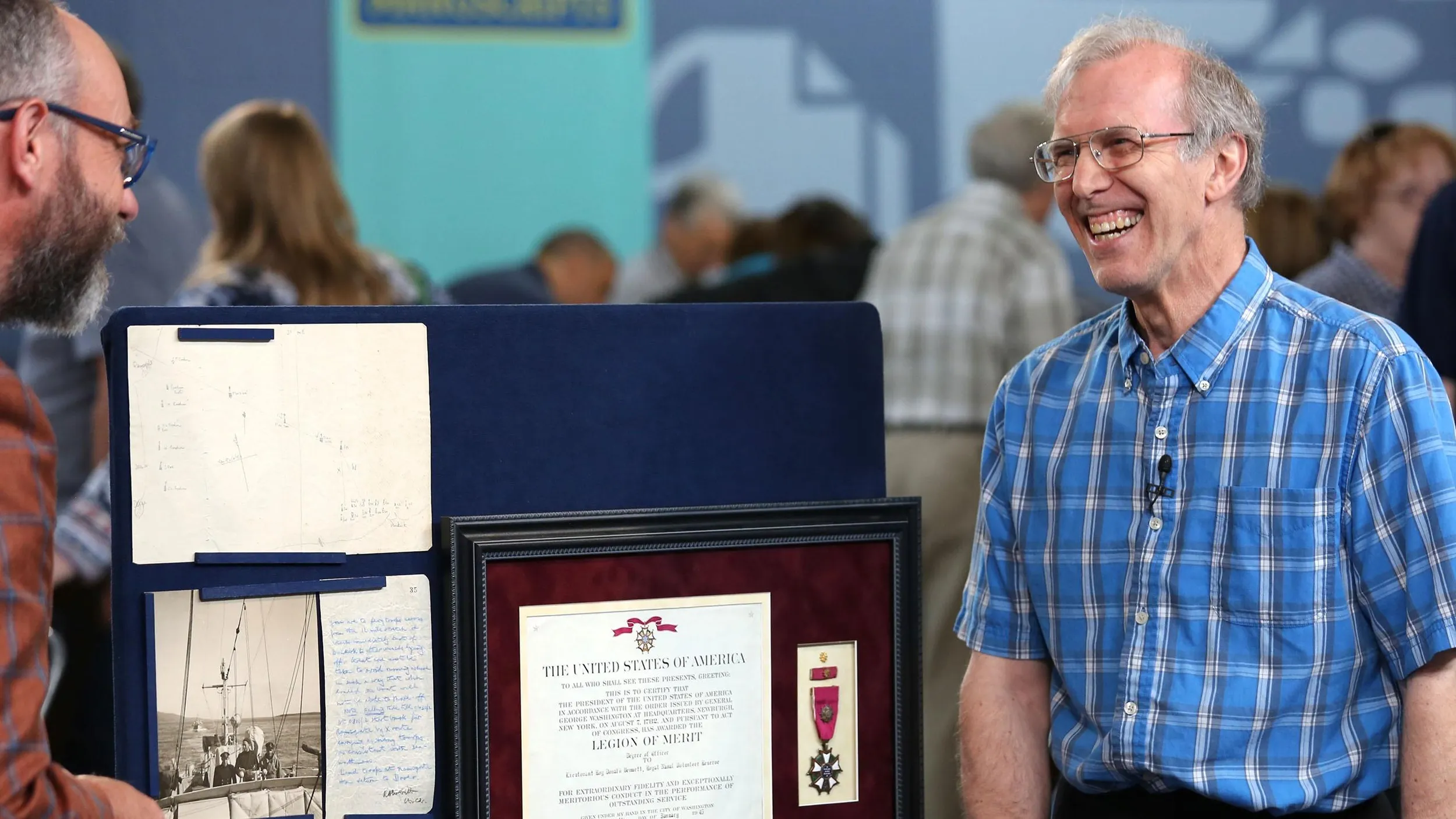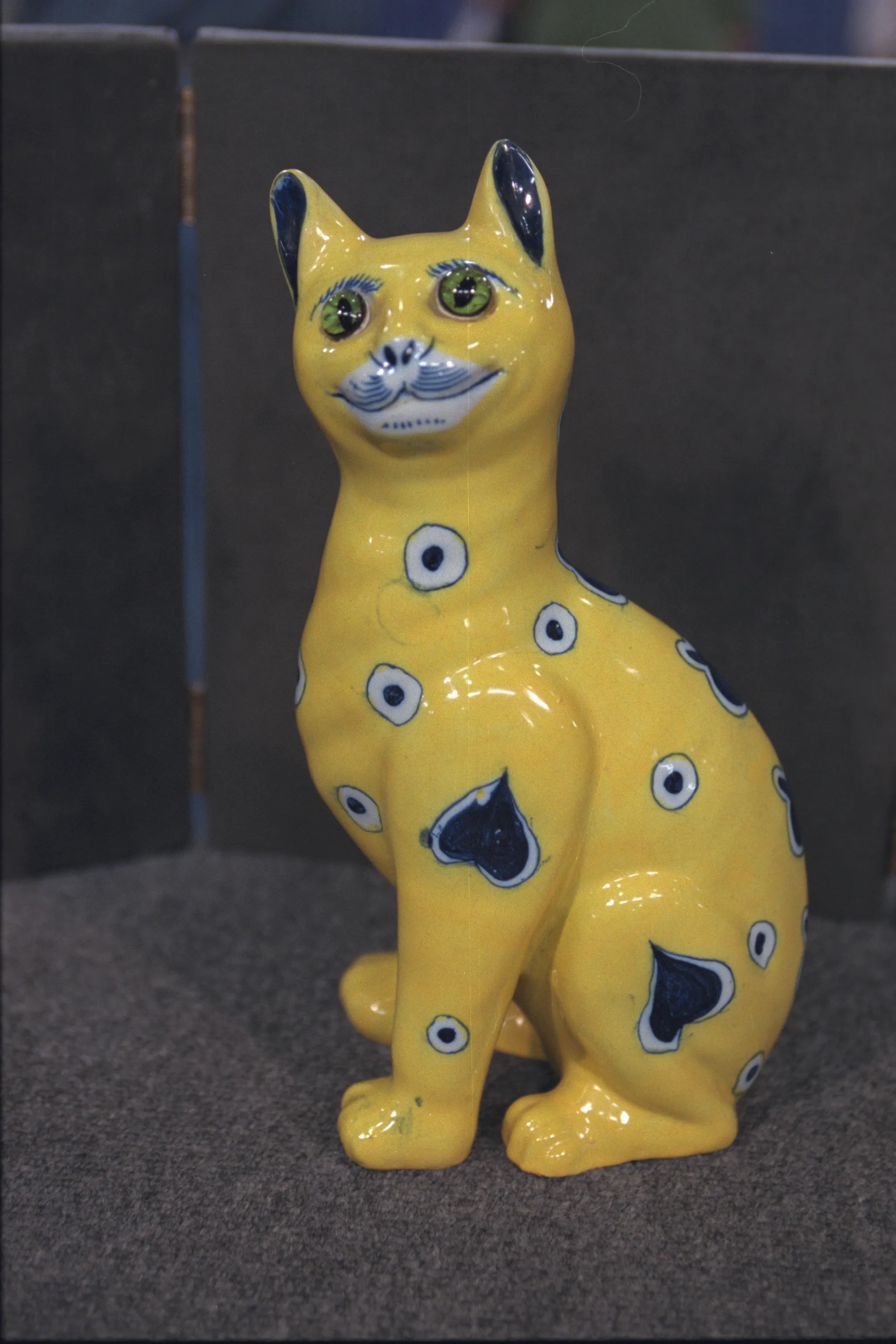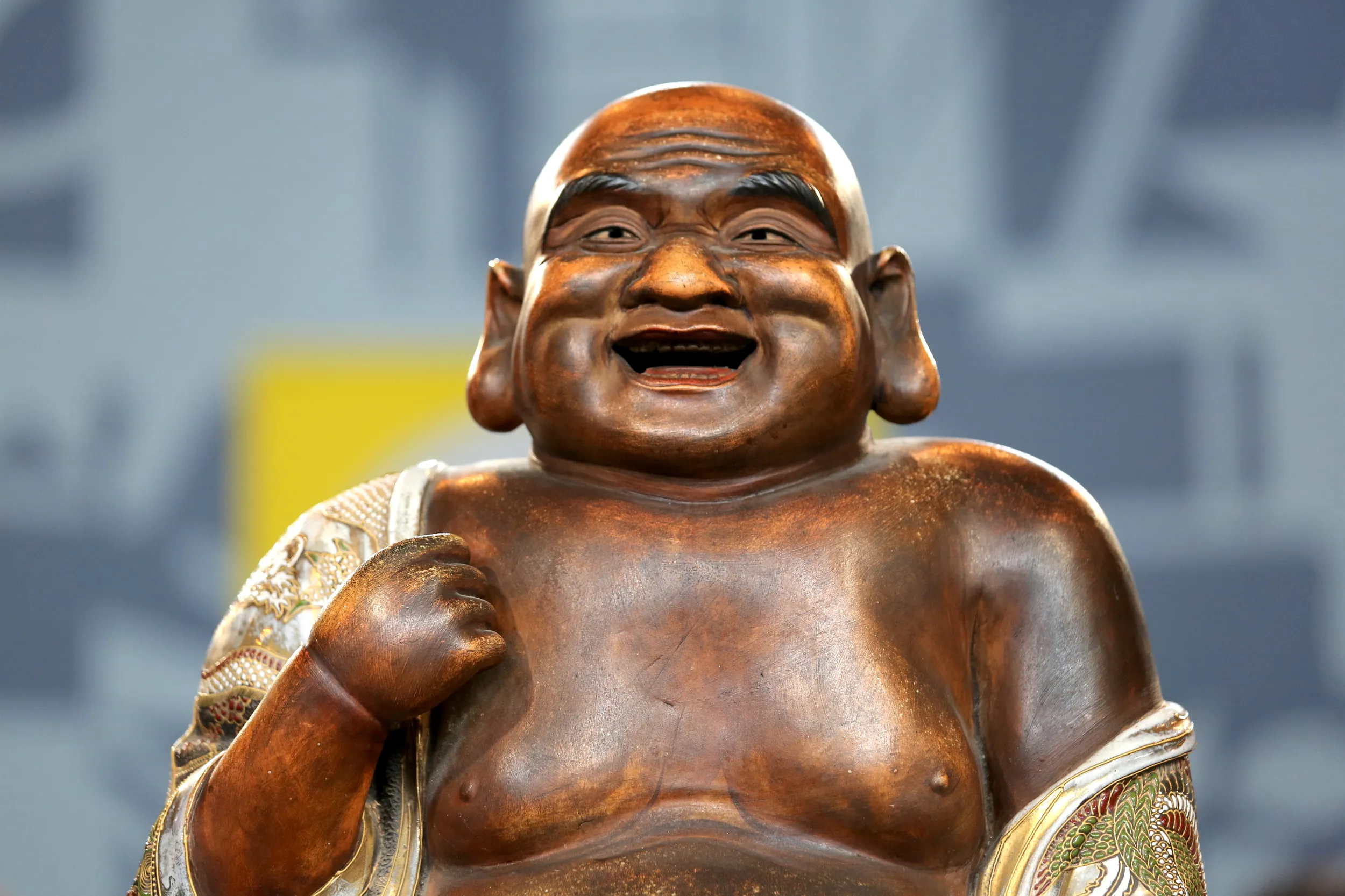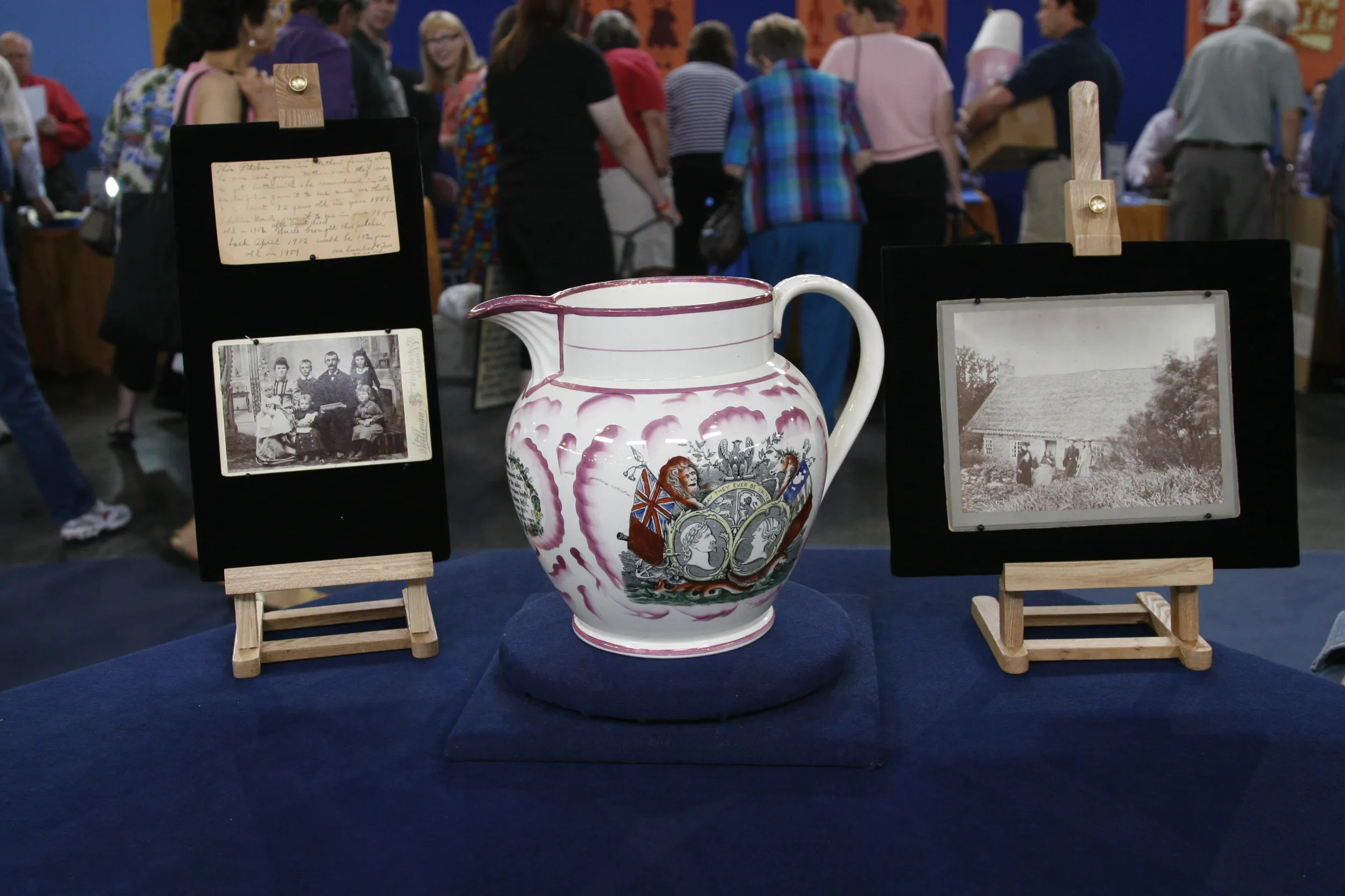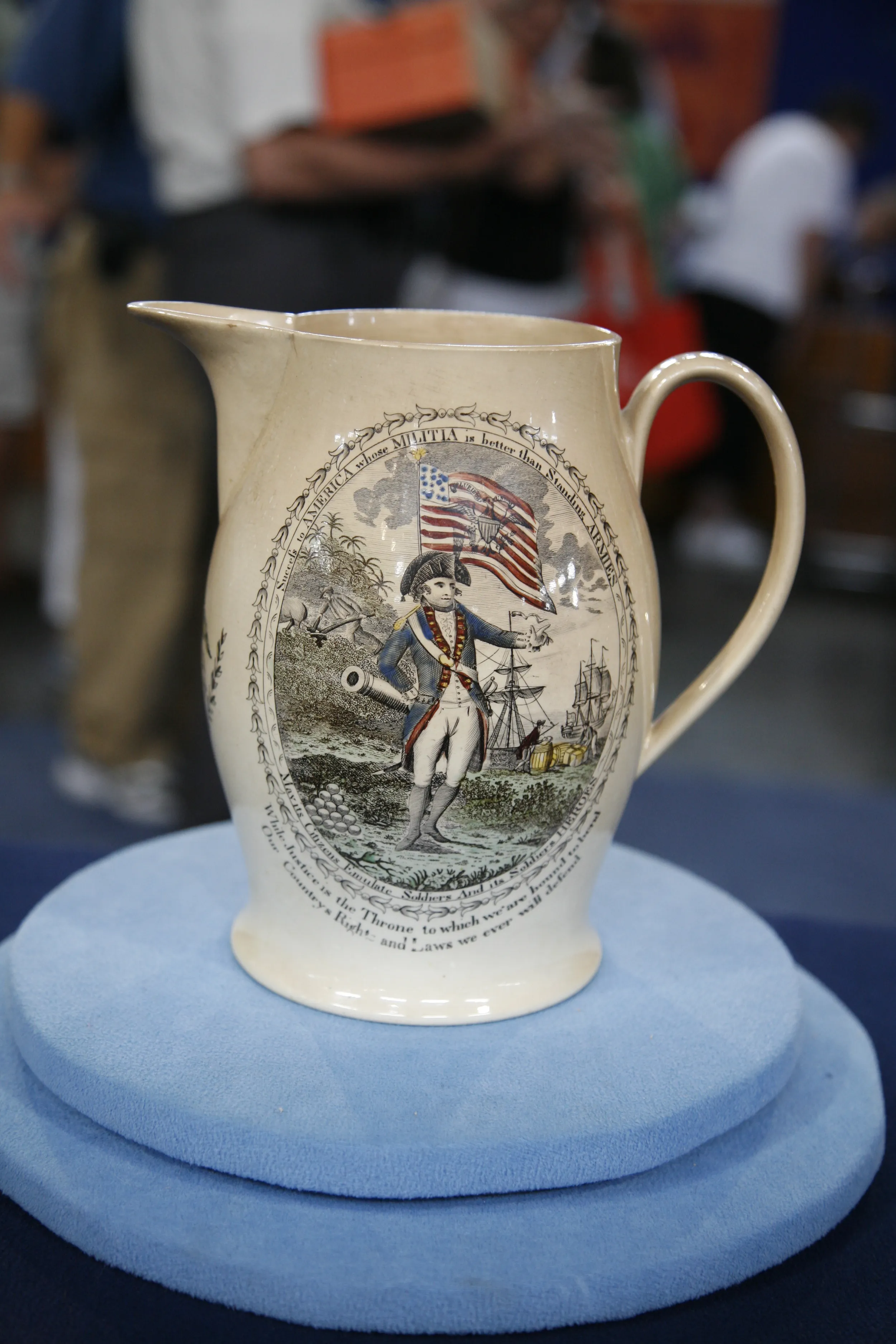GUEST: Well, it came to me by way of my mother by way of a Miss Betty Hazen. Betty was my mother's instructor at nursing school in Chester Hospital, and they became fast friends. Betty joined the army in the Second World War, joined the Army Nurse Corps, went to England, served at Eisenhower's headquarters, picked this thing up, and its sister, prior to returning home. That's the story I got. And I was never smart enough to ask exactly what is this. And it's been the subject of all manner of guesses. And one of my better friends told me it was an egg warmer. And so, henceforth it's been an egg warmer.
APPRAISER: Let's take it apart a bit. This is the top. And it just sits in here. It's not an egg warmer.
GUEST: All right.
APPRAISER: It's what we call a bough pot. B-O-U-G-H. It's made of what we call pearl-glazed earthenware. A bough pot is a device for growing and displaying bulb plants.
GUEST: Oh, okay.
APPRAISER: Think tulips or hyacinths. I would date this to about 1810 or so. We see bough pots occasionally, but almost always they're damaged. It's a rather fragile thing.
GUEST: Yes.
APPRAISER: It's very unusual to see one this appealing to the eye. It's just got everything you want as a piece of decorative ceramics. Most of it is transfer printing, but it also includes this painting. The oak leaf and acorn border here is painted on by hand, and all of these little Bacchanalian masks are picked out by hand in paint. Fabulous thing. Could only have been made in England, probably in the county of Staffordshire, by one of the manufacturers. We can't identify which one, but beautiful object. You mention that there was a sister.
GUEST: Yeah, there's a sister, it's slightly larger, probably a half-inch taller, half-inch wider.
APPRAISER: But everything else is the same?
GUEST: Yes.
APPRAISER: This is very good news.
GUEST: Okay.
APPRAISER: Because of the manufacturing techniques of ceramics this period, it could be a slight variation in size. They were designed to be in pairs. The backs are flat, it's designed to be one each side of a mantelpiece. Because of the fabulous condition, the decorative nature, and the early period, as a single item, I believe that in a good auction it could bring at least $1,000…
GUEST: Ok.
APPRAISER: …and maybe $1,500. If the other one proves to be a pair of originality, we would value the pair at more than twice that, perhaps between $2,500 and $3,500 for the pair.
GUEST: Good.

